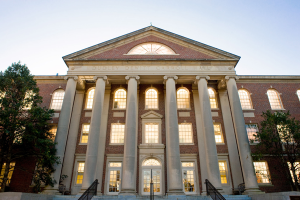Chapel Hill Civil Rights Movement photos on display in UNC J-school during Black History Month

 The UNC Hussman School of Journalism and Media will host “Witness to Rights,” an interactive exhibit of photos from the Chapel Hill Civil Rights Movement through the end of February in commemoration of Black History Month.
The UNC Hussman School of Journalism and Media will host “Witness to Rights,” an interactive exhibit of photos from the Chapel Hill Civil Rights Movement through the end of February in commemoration of Black History Month.
The exhibit — on loan from the Marian Cheek Jackson Center for Saving and Making History — features photographs by Jim Wallace, a 1964 UNC journalism alumnus and former Daily Tar Heel photographer, taken during his time as a UNC student. The photos are also published in Wallace’s book “Courage in the Moment: The Civil Rights Struggle, 1961-1964.”
In February 2012, Wallace discussed the photographs in a talk co-sponsored by the school and the Carolina Association of Black Journalists.
“Witness to Rights” is displayed on the second floor of the school's Carroll Hall. It invites audiences to use sticky notes and mounted sheets of paper to add stories, comments, thoughts and memories about the photos and the Civil Rights Movement.
Wallace, a member of the school’s board of advisers, served as a public information officer for the U.S. Air Force and, following his military service, edited a quarterly magazine based in Miami. In 1973, he joined the Smithsonian Institution and served as its director/curator of Imaging and Photographic Services, supervising photographers in the National Museum of American History, National Museum of Natural History and the National Air and Space Museum. He retired in 2003. Wallace is a member of the National Press Photographers Association and the White House News Photographers Association.
The Marian Cheek Jackson Center for Saving and Making History is a public history and community development center located in the historic Northside neighborhood of Chapel Hill. The Northside and Pine Knolls neighborhoods are home to history of life after Reconstruction, under Jim Crow, during civil rights action, and in the wake of desegregation.
Today they are among the most racially, ethnically and economically diverse neighborhoods in the area. The Jackson Center’s aim is to preserve the stories of residents, neighbors and friends and to share them widely.